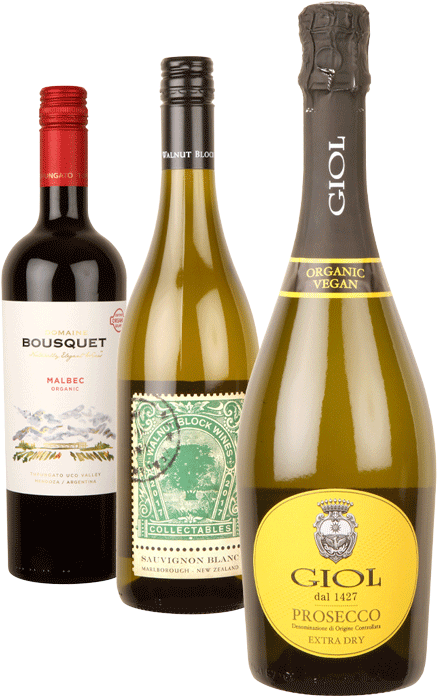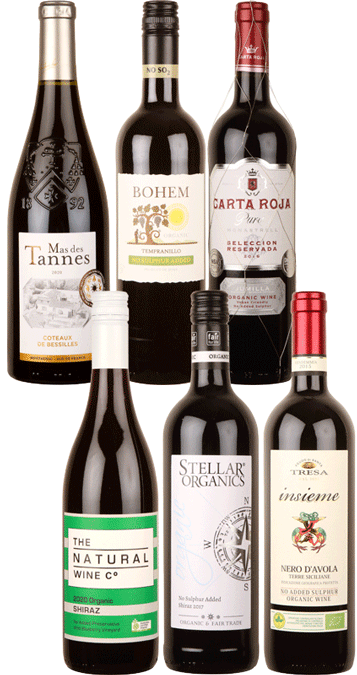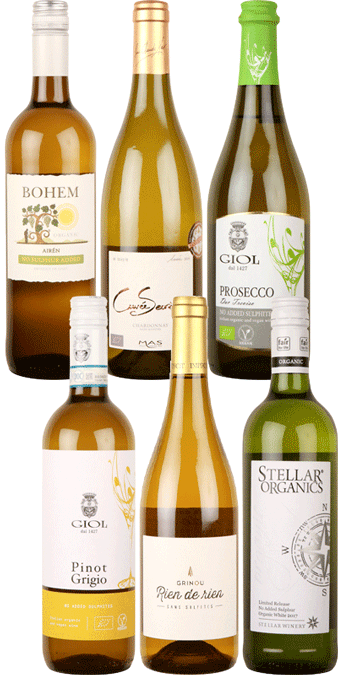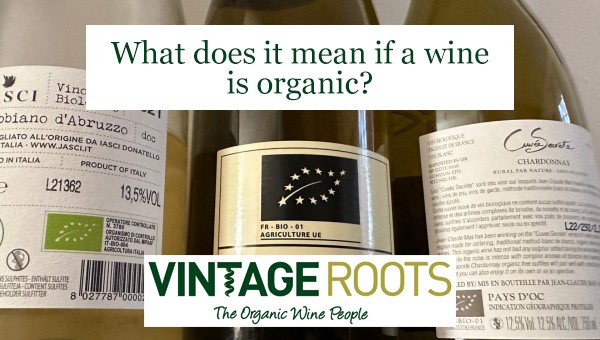Sulphites in Wine: Everything You Need to Know

When it comes to sulphites in wine, the terms “no sulphur added”, “low sulphite”, and “sulphite free” convey the impression that we’re avoiding something that could be harmful for our health. After all, if a product claims to be “low” in something, surely that something is bad for us, right?
This presumption certainly seems to have taken hold since the labelling of wine with ‘contains sulphites’ allergen advice became compulsory in 2005 (for wines with over 10 parts per million).
Sulphites have gained a pretty bad reputation, but most people don’t understand what’s wrong with sulphites in wine in the first place. Is wine without sulphites/sulphite free wine better, or is it all marketing hype?
On this page, you’ll find all the answers to your questions! We’ll answer the following questions about sulphites/sulfites in wine:
- First, what are sulphites?
- Are sulphites in wine dangerous?
- How much sulphur is in wine?
- Which wine doesn’t contain sulphites?
- Our recommended no sulphur added wines
First off: What are sulphites? And how and why are they used to make wine?
Sulphites, sulphur dioxide, and SO2 all describe the same thing: in winemaking it’s most commonly added in the forms of potassium metabisulphite, ammonium or potassium bisulphite. Sulphur is used as an antiseptic and antimicrobial to kill off unwanted moulds, bacteria and yeasts and also as an antioxidant to inhibit oxygen from reacting with and spoiling the wine. Most winemakers use sulphites in varying amounts, helping to fight off both bacteria and oxidation, making it a useful chemical for preserving wine.
You may be surprised to learn that a very small amount of sulphur is produced as a natural by-product of the fermentation process (usually under 10ppm). The human body produces around 1 gram (1000 milligrams) of sulphites per day, and in nature mustard plants actually create sulphur, and then of course there is natural sulphur which can be mined from the earth, and volcanic sulphur too. These sulphur compounds are also used to preserve dried fruits (like apricots) and they can crop up in all kinds of ready meals, tinned foods, squash drinks, etc.
There is an argument that mined or volcanic sulphur is both much more efficient and a less toxic antioxidant than the more industrially produced ‘chemical’ versions derived from the petrochemical industry, which can contain more harmful compounds like arsenic and tar.
Are sulphites in wine dangerous? What are the side effects of sulphites in wine and what are the health risks of sulphites in wine?
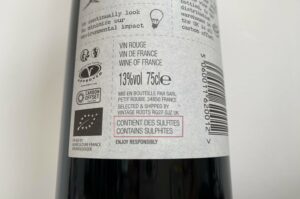
Sulphites seem to have got a very bad reputation more recently. This is possibly a little unfair as it’s all too easy to blame all side effects on sulphur!
Over-sulphured wine is often unpleasant, and the raw material (sulphur liquid or powder) as it’s used, would make you gag and cough if you caught a whiff of it. For some asthmatics it can be downright dangerous, and up to 13% of asthma cases develop a sensitivity to sulphites. The sensitivity can be fairly mild, but in severe cases, it can cause serious health problems and lead to breathing difficulties as well as other reactions like rashes and digestive issues. According to WebMD, those who lack the enzyme that breaks down sulphites/sulfites can also have serious reactions, and some individuals can experience a mixture of symptoms that include respiratory, skin, and digestive reactions. This is why wines now have to be labelled with this allergen advice in the UK.
Our bodies are all different, and we all react differently (it might be true though, that more than a fair share of hangovers get blamed on sulphites, as alcohol also has an affect!). What is true, is that many of our customers report a better or clearer, ‘morning after’ feeling after drinking no sulphur added or low sulphur wines. Some also report that sulphites cause headaches. And while there’s no established scientific link between sulphites and headaches, there is much anecdotal evidence. There are other compounds in wines (histamines, tannins, etc.) that could be causing the problem too.
Is sulphur all bad and is there such a thing as ‘sulphur free’ wine?
It is important to say at this stage that, even though sulphur/SO2/sulphur dioxide is clearly dangerous for some individuals, it has played a crucial part in helping winemakers deliver consistent, stable wines to a very happy wine-drinking community. Nonetheless, the widespread use of sulphur products in convenience foods, canned foods and dried fruit has seen a rise in sensitivity to sulphur and so it’s important we know how to reduce our exposure to it if we can. As we’ve said above, a tiny amount of sulphur is produced as a natural by-product of the fermentation process (usually under 10ppm), so this is why wine isn’t technically ‘sulphur free’. This is why we refer to wines without added sulphur as ‘no added sulphur’ or ‘no added sulphur’. We also classify our low sulphur wines as those where the winemakers use just 50% or less of the maximum allowed dosage for organic rules.
How much sulphur is in wine? Sulphite limits in conventional and organic wine
This is an interesting question, and the answer is: it all depends on the wine, how it’s made and whether it is white, red, sweet or dry. While the amount of sulphites in wine ranges anywhere from under 10 to 350+ parts per million, here are some points to keep in mind:
The good news is that you will never have an ‘over-sulphured’ organic wine or biodynamic wine. This is because the maximum levels allowed under their certification systems is less than what’s allowed in conventional winemaking. Here are some more general points about sulphur in winemaking:
- Red wines need less sulphur than white wines, as reds have natural compounds in the tannins and skins that help protect the wine naturally.
- Drier white wines are often more delicate and fragile, requiring extra sulphur to help preserve. This is true, unless they’re made using skin contact methods (similar to reds) which gives added protection and these more ‘natural’ or ‘orange wines’ are growing in popularity.
- Sweet wines will always require a lot more sulphur, as it combines and binds with the sugar first before any free sulphur dioxide can do its job. If you are sensitive to sulphur, it might be best to avoid sweeter wines.
Permitted sulphur limits for organic and conventional wines
This table from IFOAM about permitted sulphur levels in wine does a great job at breaking down sulphur limits in both conventional and organic wine. As you can see, the allowed amounts of sulphur are lower for organic wines, so if you choose organic or biodynamic wines, you will often be consuming less sulphur.
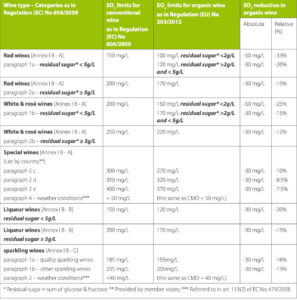
Sulphites in wine: Is wine with no added sulphites better?

As to whether or not the sulphite free wine is “better”/ no sulphur added wine is better, the answer is not straightforward.
SELECTION IS VITAL – we know there are many poor, tainted and badly oxidised examples of ‘no sulphur added’ wines around, but we’ve done the work for you and selected some of the best no sulphur added organic wines and the best low sulphur organic wines around at competitive prices. We identify low sulphur wines as those where winemakers have used just 50% or less of the maximum allowed dosage under organic regulations.
When the wines are good, they’re really good, and a growing number of winemakers are starting to believe it’s the way to make some of the best wines. Yes, it’s difficult, and yes it may not be possible for all vintages and considering the organic angle too it can be a challenge. However many of the winemakers we work with are doing it successfully.
There are many more no sulphur added reds than whites as it is easier to make them, compared to no sulphur added whites. In general, no sulphur added wines tend to be generous in style, with deep colours and lots of aroma. Sulphur addition does dampen fruit aromatics and bleaches colour, so one could argue that no sulphur added wines are wines in their purest expression.
NOTE: Natural wines are often mentioned and much discussed these days. Because they’re all certified organic and/or biodynamic, many of our wines can be described as ‘natural’, but as yet there is no legal definition for this term. For natural wines, organic and biodynamic viticulture is a minimum (but certification not necessary), and use of natural yeasts for fermentation a must, with little or no further intervention in the winemaking. Generally sulphur levels are lower in natural wines. You can explore our organic and biodynamic ‘natural wines’ here.
Which wine doesn’t contain sulphites/sulfites? Which wine is sulphite free? How to find ‘no sulphur added’ wines or ‘low sulphur wines’ on our website
If you want to drink wines without sulphites added, or to choose low sulphite/low sulfite wine, you have to know how to find these. We’re proud to offer an extensive collection of the best available no sulphur added and low sulphur added wines from around the world!
No sulphur added wines are often marked clearly with this information on the front labels. You can also look for the ‘NS’ symbol to the left of the wines on our website — this means a wine is a ‘no sulphur added’ wine.
Low sulphur wines are those where we have identified the winemakers using just 50% or less of their maximum allowed dosage for organic rules. We clearly mark these wines with an ‘LS’ symbol.
Our recommended no sulphur added wines – 6 top no sulphur added wines
We have numerous no sulphur added wines, but here are six of our top no sulphur added wines we’d recommend trying, along with our no sulphur added wine mixed cases. We have no sulphur added reds, whites and even a No Sulphur Added Prosecco and No Sulphur Added Champagne!
No sulphur added wines by the bottle
For the first red, the Bohem No Added Sulphur Tempranillo is one of our best value no sulphur added red wines. It’s ripe, black fruit forward and juicy with soft tannins and a fine clean finish.
£10.40
Next, the Carta Roja Pura Monastrell No Added Sulphur is a divine wine from southern Spain’s warm Jumilla region. It has black fruits and pepper on the nose with dark cherry, damson and raspberry jam flavours on the palate.
£9.99
With its succulent plummy fruit, Giol’s No Added Sulphur Merlot is another popular option for a no sulphur added red wine.
£11.95
Stellar’s No Added Sulphur White is a 100% Colombard with a lovely wildflower and honey nose and real tangy freshness on the finish.
£10.75
Domaines Paul Mas’ Cuvée Secrète Chardonnay No Added Sulphur is a no sulphur added Chardonnay with enticing aromas of tropical fruit and toasted notes.
£13.75
For another no sulphur added white wine, we’d recommend the Giol Pinot Grigio No Added Sulphur. It’s crisp and well balanced with creamy peach and apricot flavours.
£12.50
No sulphur added wines mixed cases
Our No Sulphur Added Six contains six of our top no added sulphur reds, From sumptuous Shiraz to nimble Nero d’Avola.
£69.00
Our No Sulphur Added Whites Six contains six of our top no sulphur added white wines from Viognier to Pinot Grigio and Chardonnay. It’s a fantastic introduction to no sulphur added white wines.
£73.00
View all our no sulphur added mixed cases here.
How to serve/enjoy a no sulphur added/sulphur free wine
A very slight spritz or fizz can occur with these wines, which is not a fault, but it helps with preservation. We suggest you open no sulphur added wines early, and even consider decanting them first or pouring them into a jug for serving. For reds a light chilling can also be beneficial. In our experience the wines (specially reds) keep and age just as well as conventional wines in the bottle.
We hope you’ve enjoyed this guide to no sulphur added/ sulphite free wine!
SHOP ALL NO SULHUR ADDED ORGANIC WINES
Sign up for £5 off your first order here.
Subscribe to our newsletter to find out about special offers here.



